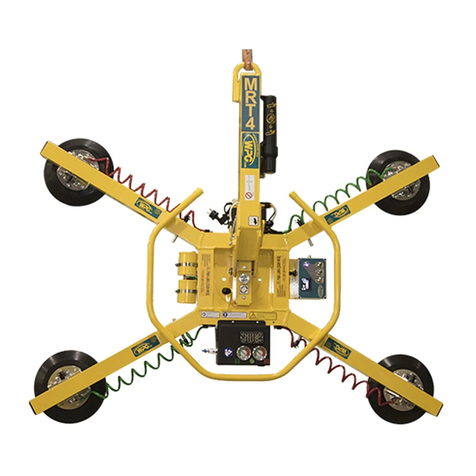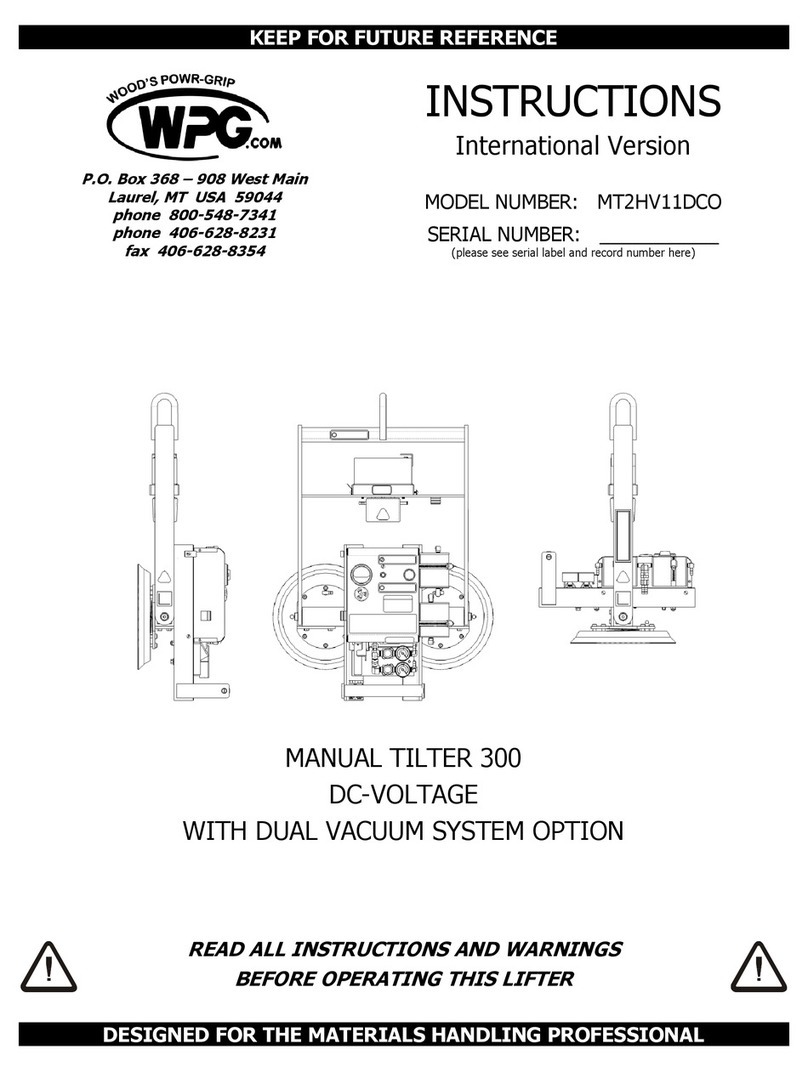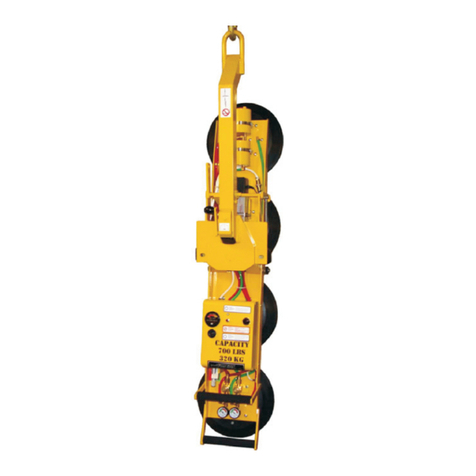WOOD'S POWR-GRIP P110L02DC3 User manual
Other WOOD'S POWR-GRIP Lifting System manuals

WOOD'S POWR-GRIP
WOOD'S POWR-GRIP LJ6VH Operating instructions

WOOD'S POWR-GRIP
WOOD'S POWR-GRIP MRT4-DC Reference guide

WOOD'S POWR-GRIP
WOOD'S POWR-GRIP POWER TILT Reference guide
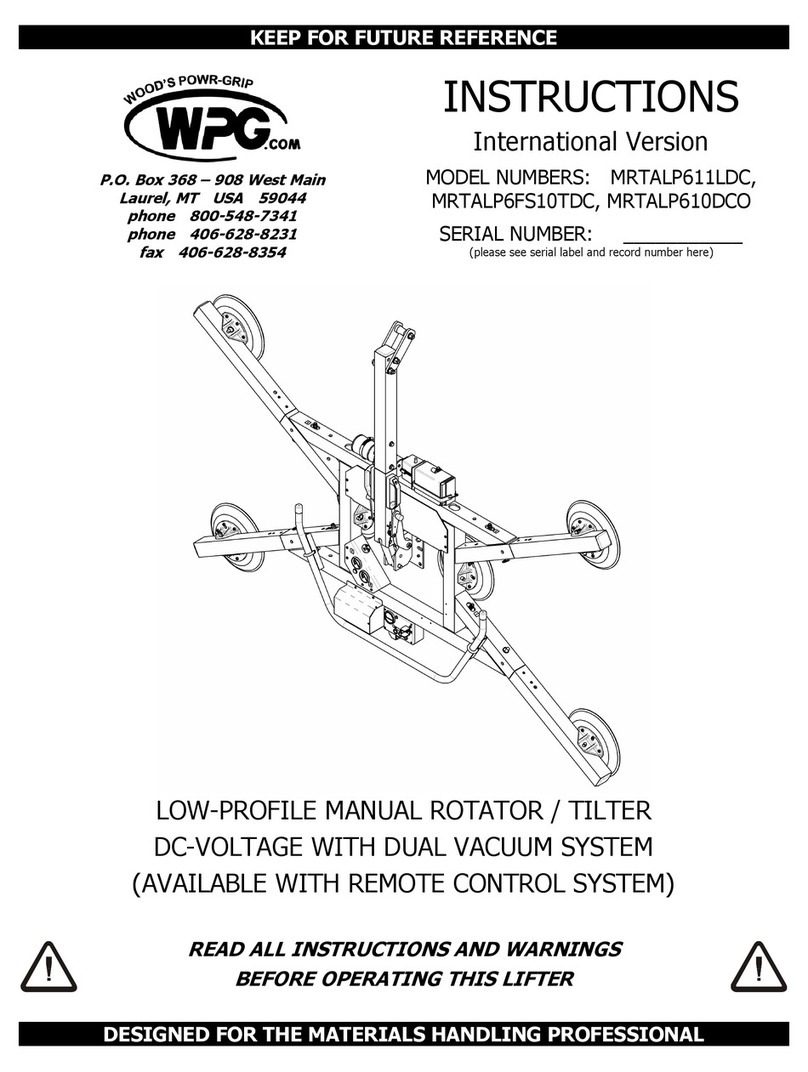
WOOD'S POWR-GRIP
WOOD'S POWR-GRIP MRTALP6FS10TDC User manual
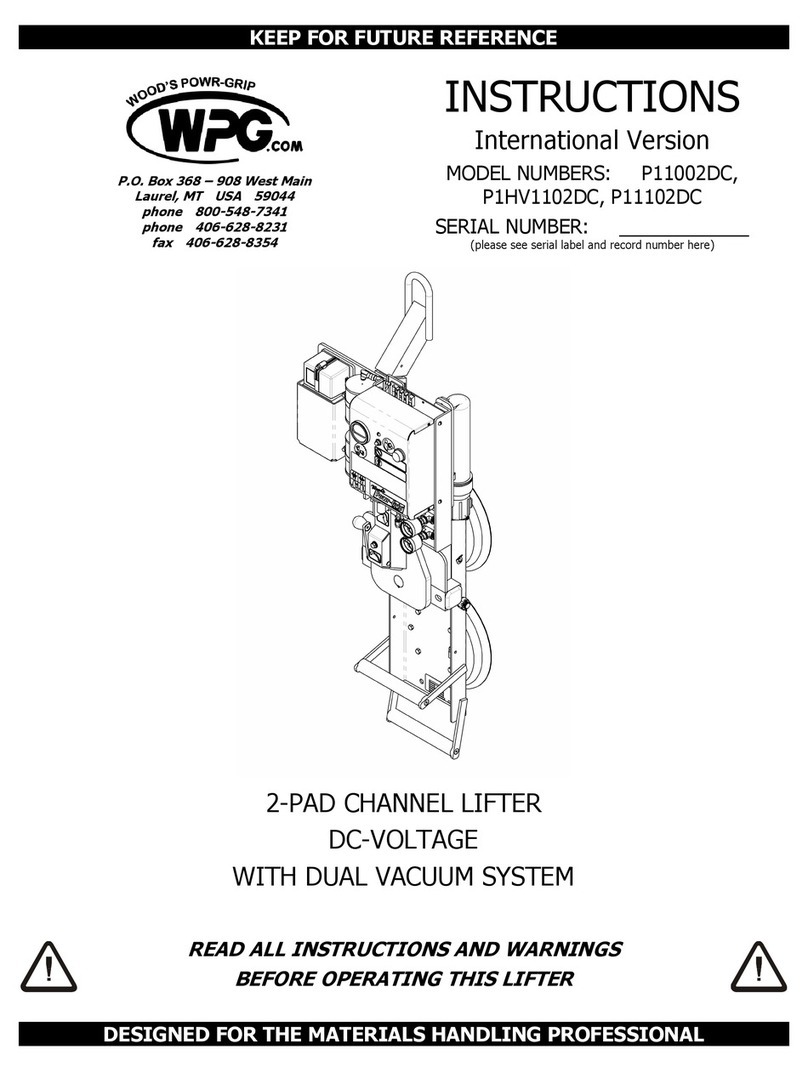
WOOD'S POWR-GRIP
WOOD'S POWR-GRIP P1 COMPACT Series User manual

WOOD'S POWR-GRIP
WOOD'S POWR-GRIP MRTALPR4FS625DC User manual

WOOD'S POWR-GRIP
WOOD'S POWR-GRIP P11104DC(3) User manual
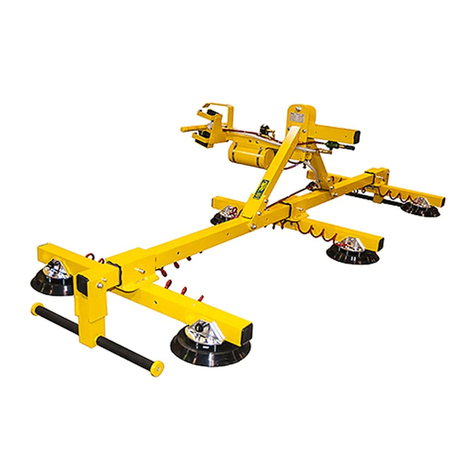
WOOD'S POWR-GRIP
WOOD'S POWR-GRIP FLEXR Series User manual

WOOD'S POWR-GRIP
WOOD'S POWR-GRIP POWR-FRAME Series User manual

WOOD'S POWR-GRIP
WOOD'S POWR-GRIP LW185 User manual
Popular Lifting System manuals by other brands

probst
probst SDH-H-15 operating instructions

Bruno
Bruno OUTDOOR ELITE CRE-2110E Operator's manual

matev
matev FPS Mounting Assembly Installation Guide

Vestil
Vestil CYL-HLT Series instruction manual

Butts Tools
Butts Tools BXS0002 operating instructions

Safelift
Safelift MoveAround MA60 Original instructions

R. Beck Maschinenbau
R. Beck Maschinenbau HS 600 operating manual

Nova Technology International, LLC
Nova Technology International, LLC NAS Series quick start guide

Genie
Genie Z-60/34 Operator's manual

Screen Technics
Screen Technics INTERFIT Vertical Up Lift instructions

Drive
Drive DUPONT SAMERY Hermes user manual

Custom Equipment
Custom Equipment Hy-Brid 3 Series MAINTENANCE & TROUBLESHOOTING MANUAL

